| Phil Kolas |
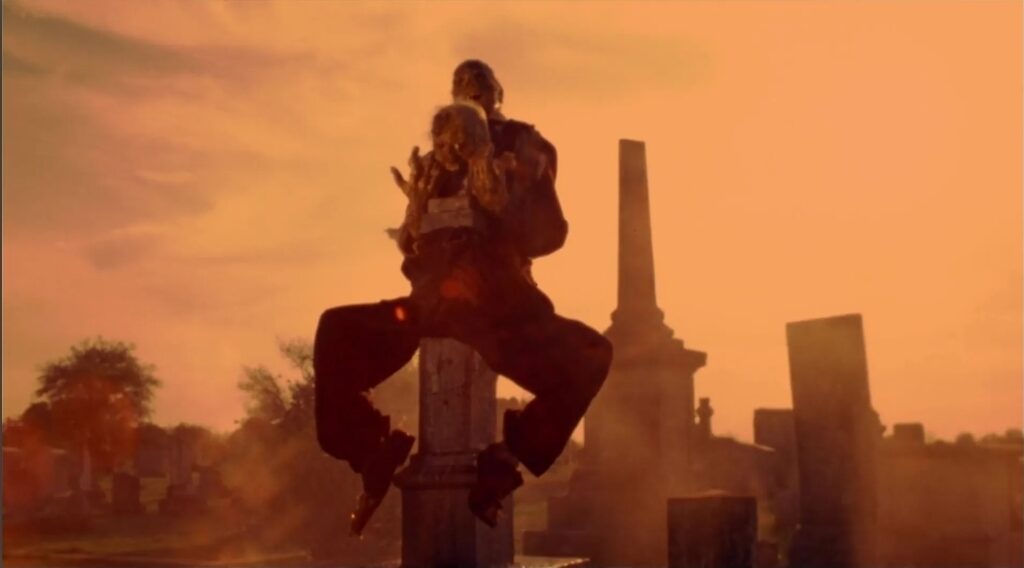
The Texas Chainsaw Massacre plays in glorious 35mm at the Trylon Cinema on Friday, October 3 to Sunday, October 5. For tickets, showtimes, and other series information, visit trylon.org.
Pulled pork tacos were a poor choice.
That was my first thought when I started this movie. After the opening flash photography montage depicting half-decomposed human bodies, leading into the zoom-out reveal of a pair of putrified corpses mangled and reassembled into a fetish totem, I was temporarily put off my protein entree for my movie dinner. Thinking back, I can’t recall too many movies that began with my full attention gripped as immediately as The Texas Chainsaw Massacre. There is no curiosity. There is no mystery. “I wonder what this movie is about” is not a thought that crosses your mind. This movie is about evil. Its every frame is a painting, if the paintings were done by Francis Bacon.
Being that this was only my second time seeing it, everything was still fresh and horrifying enough to write about. But now with just enough breathing room to Think About What It All Means, it is about a great many things. Like all great art, it can be a great many number of things, but for the interest of this essay, we’re just going to lock in on how this movie is a seminal text in the hippie ethos culture, specifically how your parents are square and their lives are bullshit. The most terrifying thing in the American Mythos is the Family Unit. The horror lies in not escaping the hive. It’s like a Faulkner novel, but with chainsaws.
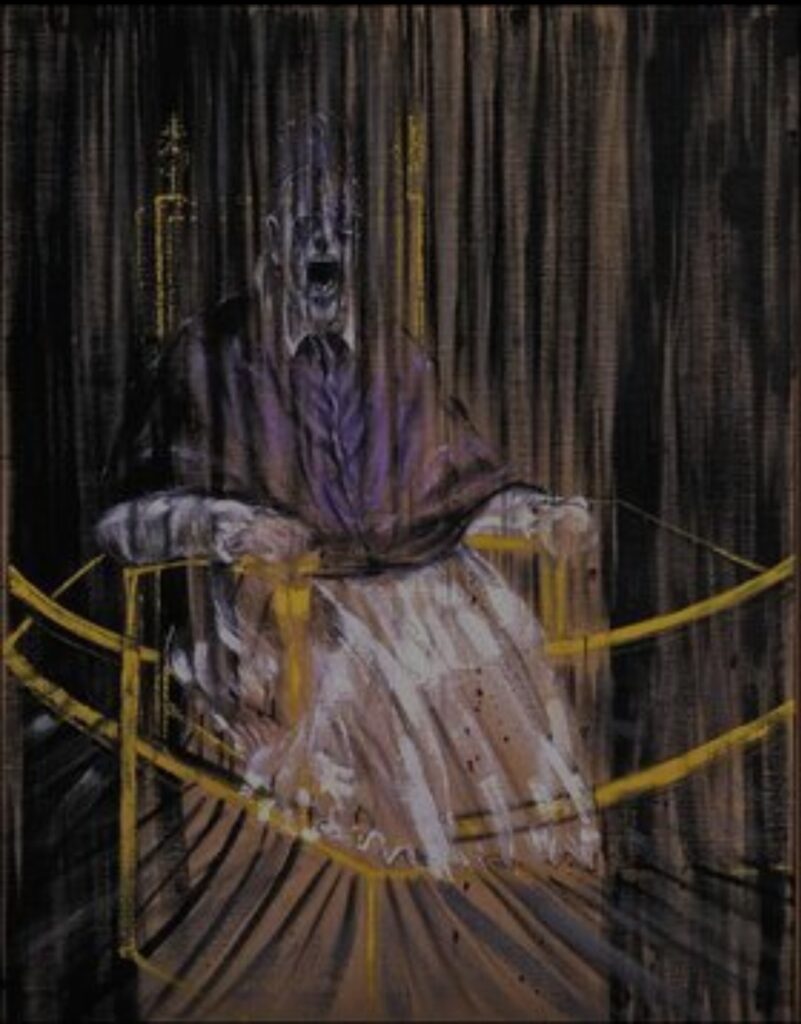
Our opening, our idyllic setting, our status quo to be shaken by the coming movie nightmare, begins with our penta-protagonists on a road trip to Texas to check on the status of a dead and buried relative—there’s been grave robbings in the area, and they need to check to make sure their grandparent is still interred in the earth (where the dead belong, where they can have no interference with the living). On their departure back to proper civilization, they pick up the Hitchhiker (unbeknownst to them as the first member of the Sawyer Family who’s been doing all the desecrated digging). It’s worth noting the celluloid beauty in that pickup scene. The rolling one cut scene, which has the van slowing to a stop and the Hitchhiker climbing into the van, is shot with the greatest rolling cinematic vista in the film up to that point so far, and even from then on. After that one moment of showcasing the great breathing windswept natural open freedom that is America, beginning immediately after that very moment that they pick up the Hitchhiker, from then on it is all claustrophobia and decay and dead brush and dried up river beds and murder and massacre.
All fecundity begins to expire once they interact with a Traditionalist, which the Hitchhiker definitely is. He waxes nostalgic and philosophic about how it’s a shame that the local slaughterhouses moved away from the old fashioned skull-hammer-smash meat murder method, and instead embraced the air gun method (even though it’s cheaper, faster, safer, more humane, and leads to better meat that’s not tainted in flavor because of adrenaline from the livestock’s fear of dying—that’s not mentioned in the cinematic text directly, it’s just stuff I happen to know; don’t ask how, you just have to know these things to be philosopher king, you know). All to say, the Hitchhiker is a man who thinks things were better in the Good Old Days. Even though the old way is an inferior idea that leads to an inferior product, the new way lacks cruelty, and that’s the Hitchhiker’s favorite part. At the expense of all other possible economic, moral, and efficiency advantages, the cruelty is the point.
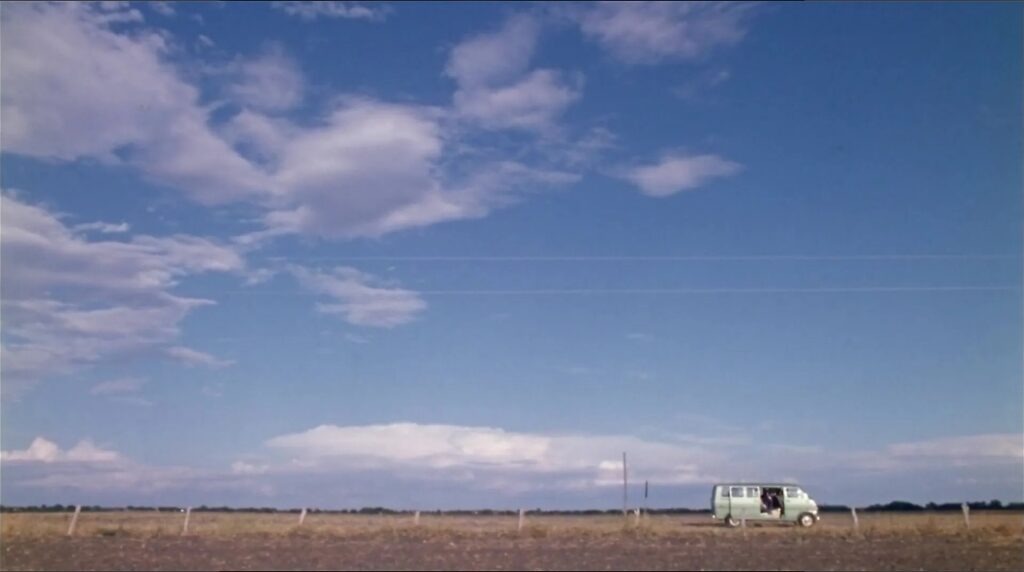
And where do Traditionalists spring from? From where do they breed and breathe and beget their barrenness? From the Home. The Home is little more than an aquarium of preservation, and preservation itself is not an inherent good. Preservation is only preservation, and preservation for the sake of pure preservation leads only to pure rot. But (other than an utterly wicked zoom shot that has the house swallow up the entire frame as the second victim makes her cursed approach) the movie wisely doesn’t make the home the villain, that’d be boring and pretentious. The concept of the Home is just the base for the violent antagonists to be antagonists. These are the Sawyers, and their heirloom is cruelty. Every home is where the preservation of Tradition, the greatest horror, is always perpetrated. A healthy home is made to be birthed in, and then flown away from. Otherwise the blood will pool in the cul-de-sac. Like the bard said: Happy families are all alike, every unhappy family is unhappy in its own way, with chainsaws.
The moral punishment of the 70s that is visited on these free-wheeling road-tripping hippie children is that they had the audacity to leave their homes and to expect that the world, or at least their lives, would be better than what came before them. To be better than what they were escaping. That the 60s had some semblance of imagination, or consideration that maybe the next crop of Americans could set their own boundary on evil and not turn into their parents from the 40s and 50s if they got far enough away. But the slaughterhouse monster snatched them right back in again. It’s like the ending of Easy Rider, except with chainsaws instead of shotguns. America doesn’t like it when you try to change America, even if it’s for the better.
There’s an offhand scene in the third act, where the oldest Sawyer has captured our main heroine and is bringing her back—retrieving the lost sheep who dared to run for freedom—and he’s almost mindlessly pummeling her with his off driving hand, poking her with a large stick while she cries in the potato sack. It’s the purest, most bored sadism. It’s doing nothing of any pragmatism or use. Only the cruelty is the point.
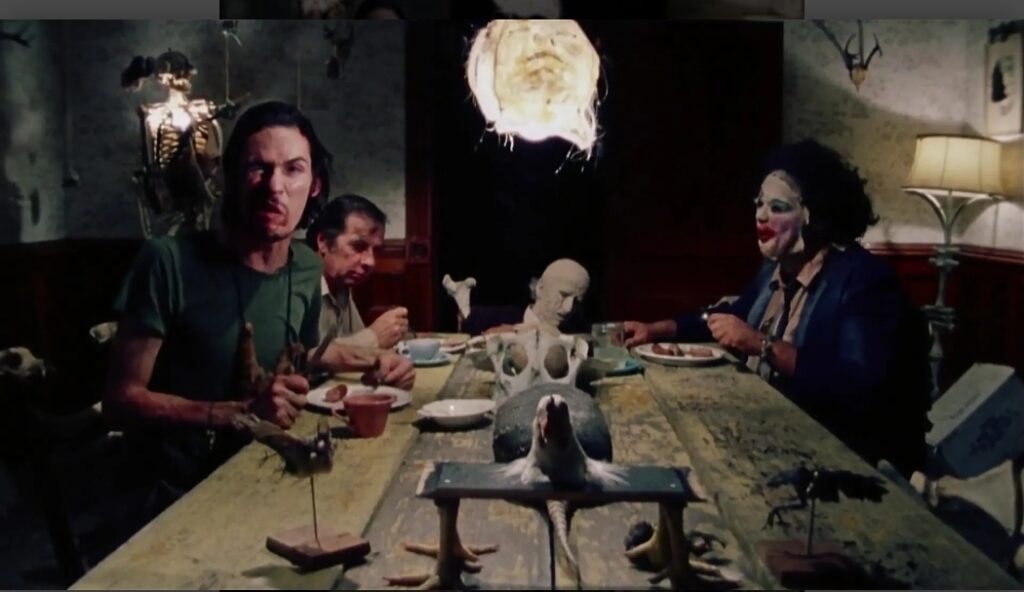
Leading into the Dinner Scene. The clearest and most obvious reflection that the Nuclear Family is the Toxic Family. It’s fair to say that not all families of all time are inherently toxic, but I’d say that was the general assumption coming out of the 60s and 70s, at least for kids Sandy’s age. Any Tradition & All the Houses that Protected It that led to that Vietnam War are found guilty by association, as far as this movie is concerned. All the archetypal members of this macabre meal are accounted for—even Leatherface in his best housewife skin-face, with makeup & lipstick—and the most trapped, incessant, unbearable horror scene of the whole film. All of the heroine’s earlier and luckier friends were allowed to just simply be murdered. She has to sit through actually interacting with her fellow familial inmates. Most importantly for our theme of rot feasting on growth, the scene where they feed the blood cut from our heroine’s hand to Grandpa Sawyer, the desiccated corpse of the past (well overdue for the cemetery) is literally feeding off the vitality of its nation’s youth.
These are the things you get with a family comprised entirely of Traditionalist dead-end losers. Shit always rolls downhill, and with the sun in angry solar flare (“when the earth is having a bad day” to quote the director Tobe Hooper) the bottom of that intergalactic shit hill is the Sawyer’s front door. And the only thing they have on hand to even attempt to maintain some superiority over others is the act of sheer violence; whatever they can do to you that you can’t retaliate, just for the fact that you can’t retaliate is what makes it fun. The cruelty is the point, because they have no other point. They have nothing else going for them, except what they can do to hurt other people, to put people below them. Whomever they are beating and eating, that is who they are winning against, if even for a moment. It’s a Cormac McCarthy book about the inescapable stain of violence burned into the soul of America, but with chainsaws. We already have a movie version of Blood Meridian. It’s called The Texas Chainsaw Massacre.
And it is a cycle. It is each of them hurting each other, and hurting whoever they come in contact with. As the Bible says, hurt people hurt people, with chainsaws. There is no forgiving or fixing a cycle. There is only breaking it. In one regard, it remains unbroken—the sun rises on a new day in America, The Day of Leatherface. The Joy of Cruelty. But Sandy, our heroine, is still alive. And she did not defeat the Sawyer family. She did not redeem, heal, chastise, fix, or accept that cavern of unhinged and violent men. She got in another car and she left. The movie bookends with automobile liberty, the grace and freeing myth that has sustained the best parts of America: to Keep It Moving Somewhere Else & Leave All That Old Shit Behind (it used to be horses, it used to be boats from the Old World to the New One, but the theme still stands). She kept running from what wanted to kill her. There is no fixing a broken family. You are one person. They are legion. There is no resolution of justice, there is only escape. Perpetual forward movement away from what tried to kill you. No forgiveness, no forgetting. There is only movement away.
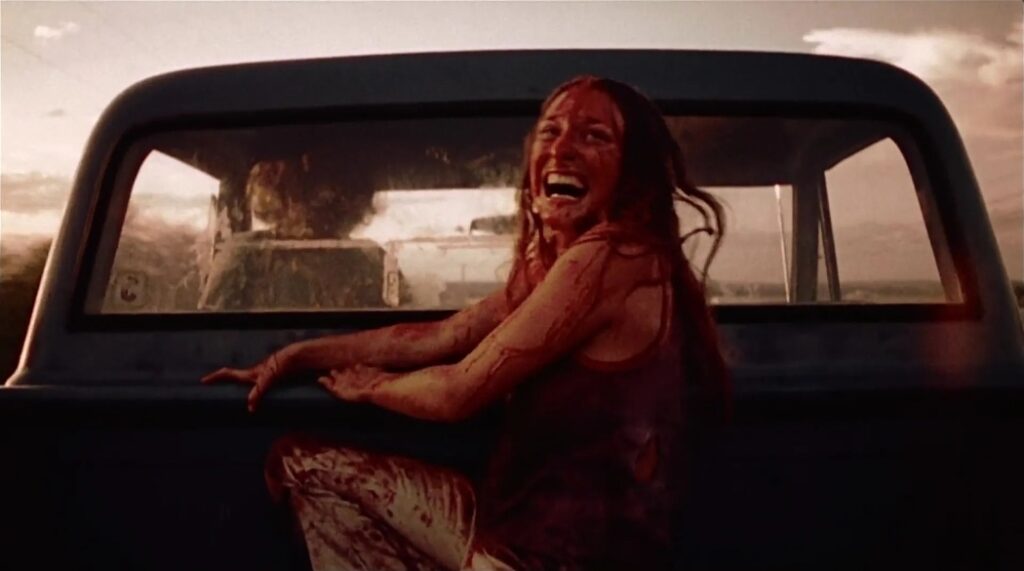
Edited by Finn Odum
